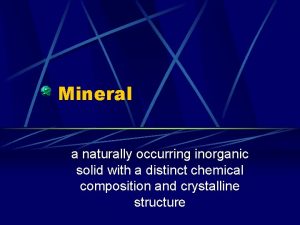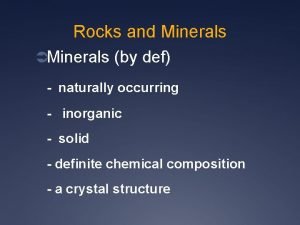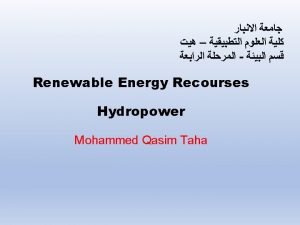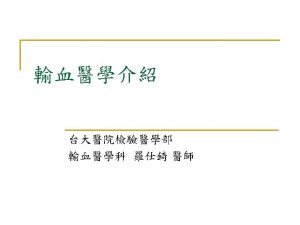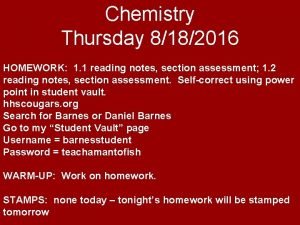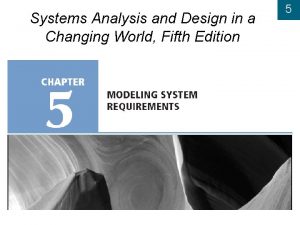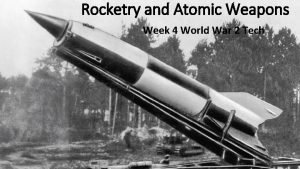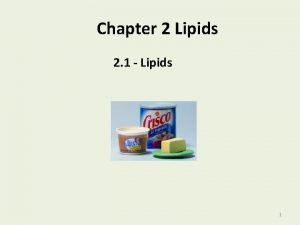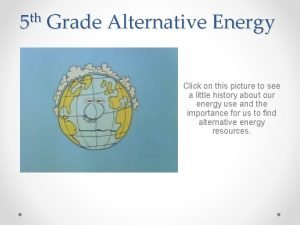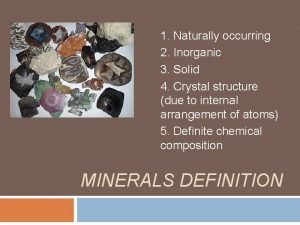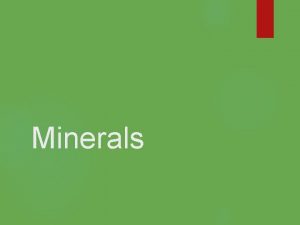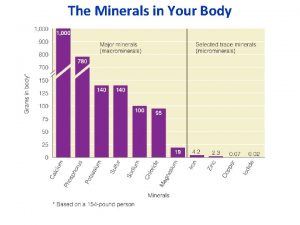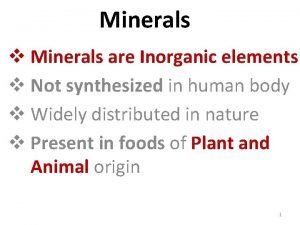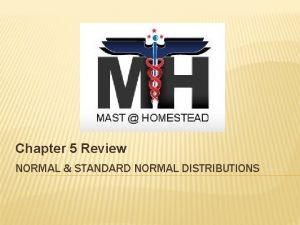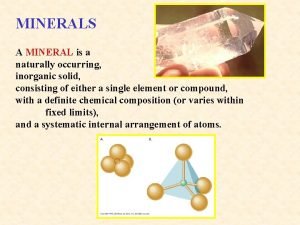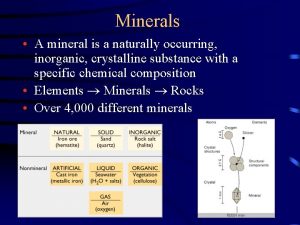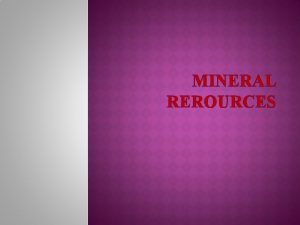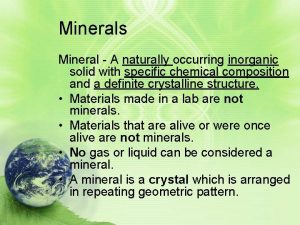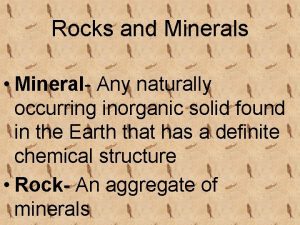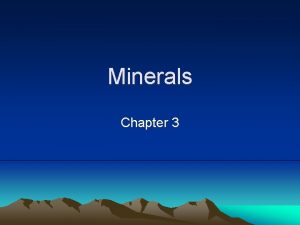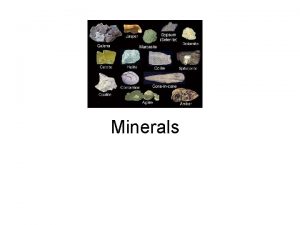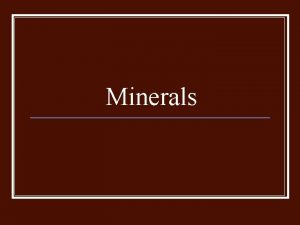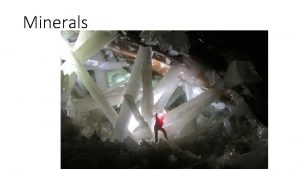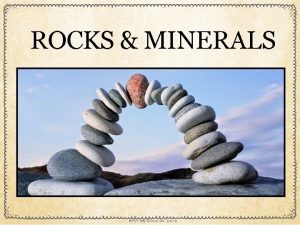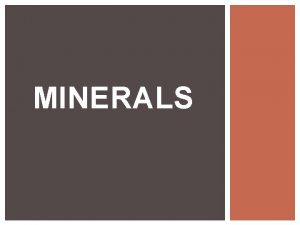Minerals What is a mineral Naturally occurring Inorganic














- Slides: 14

Minerals

What is a mineral? • Naturally occurring • Inorganic (non-living) • Characteristic chemical composition • Solid • Crystalline structure- specific arrangement of atoms

How is matter classified? • Element • Cant be separated into simpler substances • Atom – smallest part of an element that has all of its properties. • Molecule – 2 or more atoms chemically combined. • Compound – 2 or more elements chemically combined. • Mixture – 2 or more substances physically combined.

Grouped by Chemical Composition • Silicates – Compound of silicon and Oxygen, make up 75% of all minerals. Quartz is the most common silicate. • Carbonates – Compound of carbon and Oxygen. Calcite is the most common carbonate.

Crystal Size Large Size crystal are formed during a slow cooling rate. Small size crystals are formed during a fast cooling rate. If the cooling is very fast no crystals may form. An example are minerals formed from lava.

Mineral properties • Color • Luster • Habit (Shape) • Cleavage & Fracture • Streak • Hardness • Other – magnetic, florescent, smell

Color: Easily observed, least reliable to ID mineral.

Luster: How minerals reflect light from its surface. Metallic Nonmetallic

Crystalline structure Characteristics shape of mineral resulting from atoms and molecules coming together when mineral forms

Cleavage & Fracture Cleavage: Mineral breaks along smooth definite surfaces. Fracture: Mineral breaks along rough or jagged surfaces.

Cleavage & Fracture Best identified on a fracture surface

Streak Color of powder when scraped against a rough surface. Color stays the same for each mineral

Specific Gravity • Specific gravity – Measure of density of mineral in air compared to density of mineral in water.

Hardness Ability of a mineral to resist being scratched. Hardness tests uses the Mohs Scale of Hardness. 2. 5 Fingernail 3. 5 Penny 4. 5 Iron nail 5. 5 Glass 6. 5 Streak plate
 Naturally occurring inorganic solid material
Naturally occurring inorganic solid material Naturally occurring mineral
Naturally occurring mineral Naturally occurring areas of hydrothermal resources
Naturally occurring areas of hydrothermal resources H
H Largest naturally occurring element
Largest naturally occurring element Is a naturally occurring association among specific things
Is a naturally occurring association among specific things Largest naturally occurring element
Largest naturally occurring element Steroid nucleus structure
Steroid nucleus structure Disadvantages and advantages of hydroelectric energy
Disadvantages and advantages of hydroelectric energy Naturally occurring areas of hydrothermal resources
Naturally occurring areas of hydrothermal resources Inorganic mineral definition
Inorganic mineral definition Inorganic mineral definition
Inorganic mineral definition Enzim
Enzim Iron deficiency anemia smear
Iron deficiency anemia smear Find the probability of z occurring in the indicated region
Find the probability of z occurring in the indicated region
